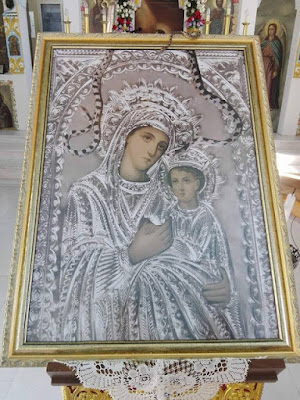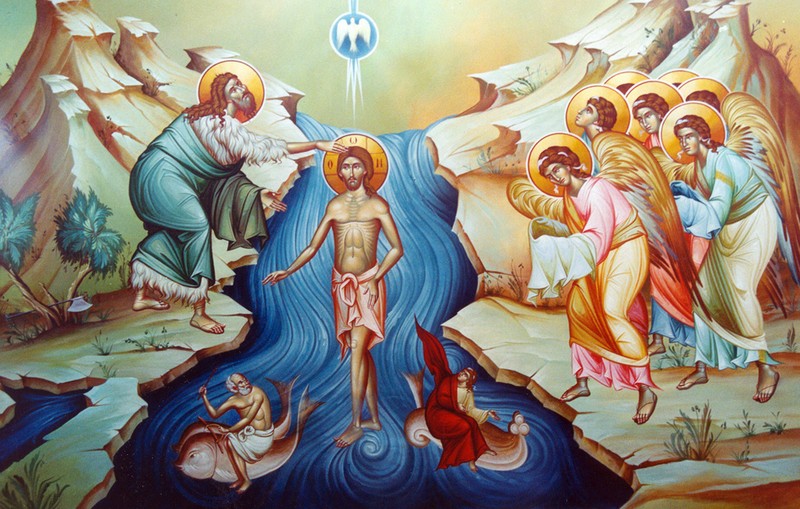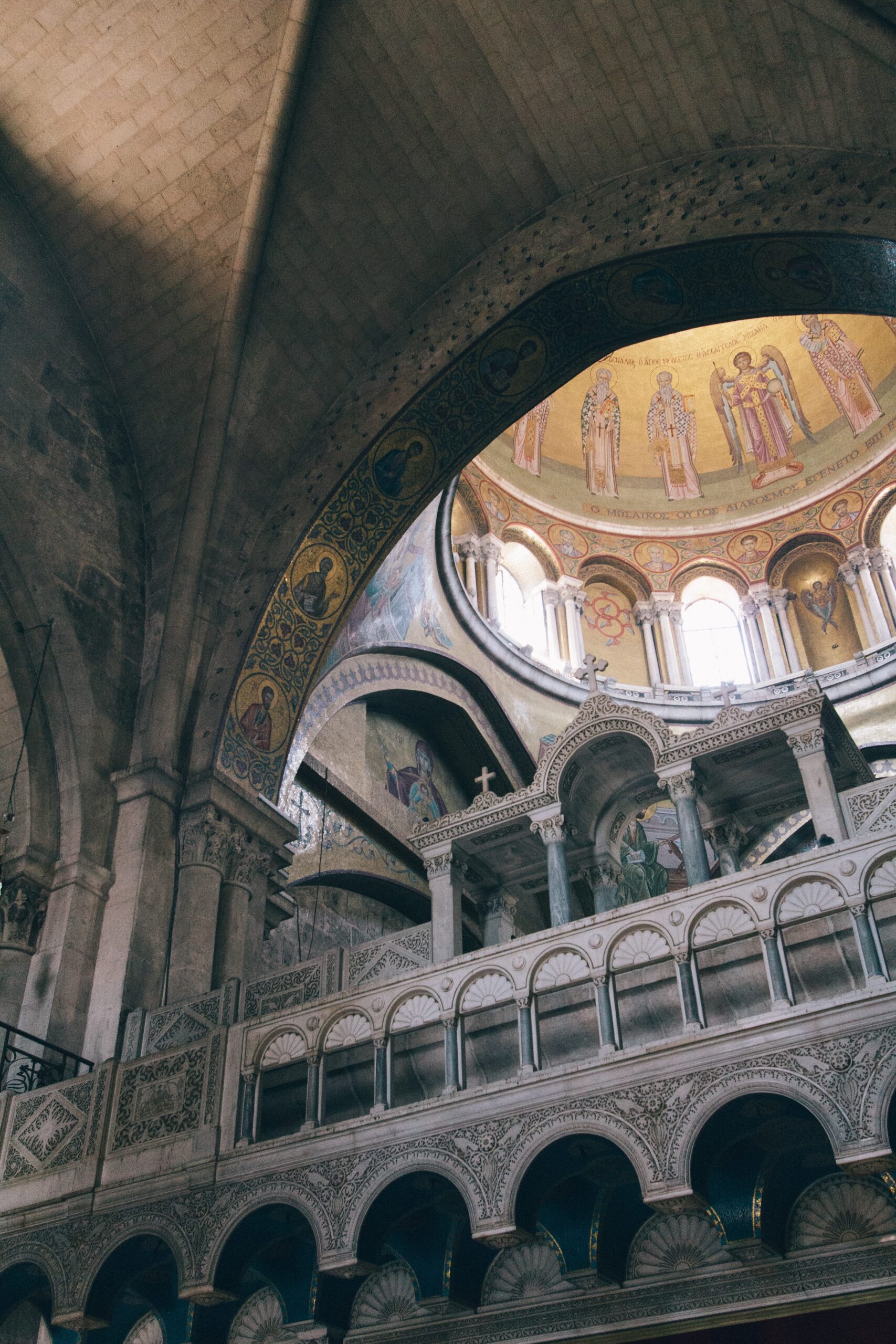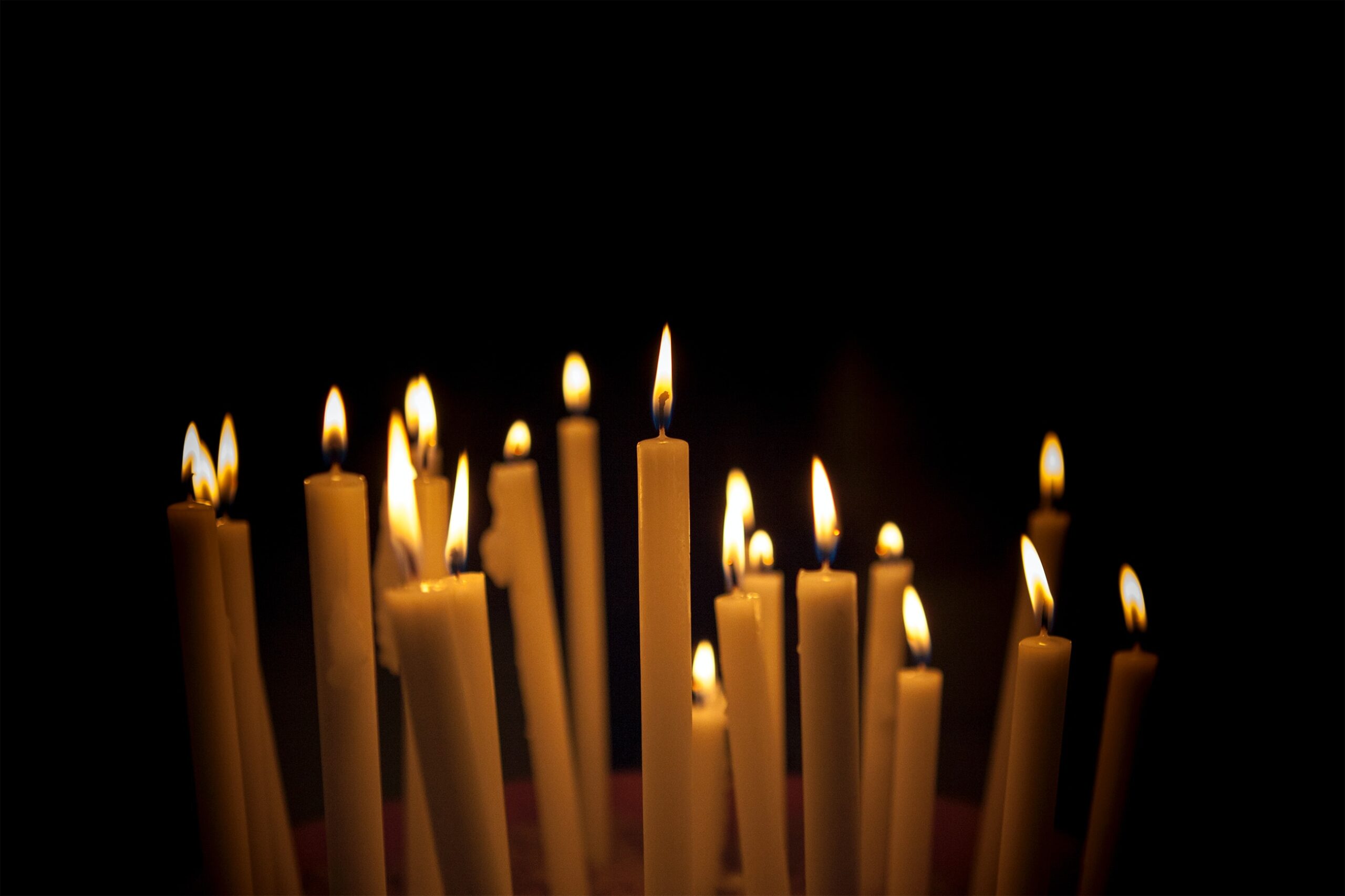I grew up in a miracle-believing town. Tulsa, Oklahoma, was and still is a center of charismatic Christianity, which Merriam-Webster defines succinctly and accurately as “the religious movement that emphasizes the seeking of direct divine inspiration and extraordinary power (as of healing) given a Christian by the Holy Spirit.” Tulsa is the home of Oral Roberts University, Rhema Bible Institute, and many churches that actually schedule and promote healing services and expect divine intervention in our daily lives.
There are many things to admire about this type of faith, especially the conviction that God is ever-present, powerful, and desires us to seek Him and to cast all our cares upon Him (1 Pet. 5:7). A dark side exists in this movement too, notably in the health-and-wealth corners of belief and in the tendency for faith to morph into a demand that God give us what we want. Still, I am grateful that I was surrounded by many people who turned to God in their need, with deep faith and confidence in His ability to act.
But one type of miracle that I had never heard of until I became an Orthodox Christian is the recurring miracle—signs and wonders that follow the Church calendar, year in and year out. Of course, if anyone had told me about these things when I was younger, my response probably would have been, “What’s a church calendar?” I knew Christmas and Easter occurred on an annual basis, but we didn’t do much in the way of feasts and fasts.
So today I want to talk about three particular recurring miracles: events that occur on Theophany, Pascha, and during the Dormition Fast. There are many modern miracle stories in the ancient Church—the podcast Signs in Our Times with Fr. Theodore Petrides shares some of these stories to bolster our faith in Jesus Christ.
But for now, let’s limit our discussion to snakes, water, and fire.
A Miracle of the Dormition: The Snakes of the Panagia

The Dormition Fast in August has special meaning in Kefallonia, the largest of the seven Ionian islands in Greece. During a nine-day period, small snakes mysteriously make their way into two different churches dedicated to the Feast of the Dormition—one in Arginia and one in Markopoulo, which is the more famous of the two.
In his Orthodoxy Then and Now blog, author John Sanidopoulos writes,

As a sign posted on the bell tower written in both Greek and English informs the visitor, the snakes of the Holy Virgin make their annual appearance at Dormition Church between the Feasts of the Transfiguration of Christ and the Dormition of the Theotokos from August 6th to the 15th. As the days close in towards the Feast of the Dormition, so do the number of snakes increase, until finally they disappear at the close of the Feast, not to be seen until the same time next year. Where they come from and where they go after the Feast is unknown.
Wait a second. Aren’t snakes usually associated with demons? When talking about them, we tend to remember the serpent in the account in Genesis of the Fall of Adam and Eve. But this annual arrival of the snakes at the churches of the Dormition points us to a time before the Fall.
Let’s go back to the beginning of this remarkable annual event. In the article “The snakes that venerate icons” in the blog A Reader’s Guide to Orthodox Icons, the author writes:
The chapel at Markopoulo is built on the ruins of a convent. In the early 18th-century, the nuns there were attacked by pirates. After praying to the Mother of God for help, the church was filled with snakes; when the pirates entered the convent they were terrified by the sight and fled. Every year since then, snakes have appeared during the Dormition fast around the church, venerating the icons there, leaving after the feast itself.
These snakes have been returning for more than 300 years. So, what does it all mean? The article continues, “The first, straightforward meaning of the snakes appearance in Kefallonia is simply to remind us of one of the many times the Mother of God has helped those who prayed to her.”
Sanidopoulos describes the snakes and their behavior:
They are small in size (no more than three feet in length), adorable, calm, harmless, and bear four mysterious dots in the shape of a cross on their head as well as the tip of their narrow tongue. Some wrap around the wrists, shoulders and chest of young and old alike, where few even allow them to enter their sleeves and escape through the other side. Others decorate the icons of the church, the crucifix, and even the bread offerings used during the services, with their presence. . . . The atmosphere is reminiscent of the Garden of Eden, when the first formed man and woman lived peacefully with all the wild animals.

Okay, I know the odds are high that some of you are quite fearful of snakes. But if all snakes behaved like the snakes of the Panagia on Kefallonia, our world would be very different, echoing the harmony of creation in the Garden of Eden.
These snakes may or may not be venomous; accounts differ, but during the service they are friendly and gentle. Pilgrims pick them up to venerate them, and they place the snakes on their bodies. Sanidopoulos writes about interviewing longtime villagers, who reported that over the years some snakes crawled up the bishop’s episcopal staff, and during the Gospel reading snakes would crawl up the arm of the clergyman, rest on the pages of Gospel book, “and even bow their head until the reading was over.” In Markopoulo they slither toward a wonderworking icon of the Theotokos known as the Panagia Fidousa.
A high-quality, close-up photo was taken of one of the snakes in 2019:

As an article in Orthodoxwiki notes, “The snakes show no fear while the services are held and are harmless during the festivities. As soon as the Liturgy concludes on the 15th of August, they become hostile and aggressive and disappear back into the wilderness of the area. The snakes cannot be found until the following year.” [“Holy Snakes,” www.orthodoxwiki.org]
Sanidopoulos reports, “One local priest relates how many people have searched the entire island for these snakes, but they cannot be found at any time of the year. Other snakes are found, but not these.”
In the 20th century, the snakes did not appear in two different years: Once, during World War II, when the Germans slaughtered 6,000 Italian soldiers. The snakes also didn’t visit during the year of a great earthquake in 1953. Locals consider it a bad sign if the snakes do not arrive at church by the Feast of the Dormition on August 15th.
In the past, before World War II, perhaps 20 to 30 snakes arrived at church during the Dormition fast, but now only a few come. More tourists crowd the area now because of publicity from Greek television, and larger crowds coincide with fewer snakes—maybe one to three of them. The faithful search for them, pick them up, and bring them to the icon and to the bishop to protect them from being trampled. At the end of the service, the snakes are returned to the spot where they were picked up. And on the feast on August 15th, after the Divine Liturgy ends, they disappear until the following year.
The only video I’ve been able to find on YouTube with English subtitles is called “Orthodox Miracle—Snakes in the Church.” It is five minutes long, and the Russian narration is translated into subtitles by someone whose English is not very good, but still understandable. It’s worth watching.
Here are a few additional articles from John Sanidopoulos for more information:
“The Snakes of the Panagia Have Made Their Appearance in Kefallonia”
“The Holy Snakes of the Virgin Mary in Kefallonia, Part 1”
“The Holy Snakes of the Virgin Mary in Kefallonia, Part 2”
A Miracle of Theophany: The Jordan River Reverses Its Flow
On January 6th of each year we celebrate the Feast of Theophany, more commonly known in the West as Epiphany. Western Christians focus on the coming of the magi to worship the newborn King Jesus, but in Orthodoxy this day celebrates Jesus’ baptism in the Jordan River by St. John the Forerunner.

One of the hymns of Theophany (I’m not sure which translation) proclaims,
Today the nature of water is sanctified.
The Jordan is parted and reverses its flow
On seeing its master baptized.
The GOA words this even a bit differently in the service of the Great Blessing of the Water:
Today the substance of water is made holy,
for the Master is washed in the Jordan.
When the River sees Him, it stops its flow and bursts forth.
In other words, our hymnography speaks of the Jordan River flowing backwards when Christ entered the water. When I first heard this, I remember thinking that it’s possible—I mean, the Holy Spirit descended in the form of a dove, and the voice of God spoke. This was a miraculous moment in history.
But I didn’t really give the idea much thought. I guess I considered the idea of the Jordan reversing its flow as a metaphor, not a reality. In this, I was thoroughly Western and rationalistic.
I didn’t know that when a cross is thrown into the water as a hymn of Theophany is sung, the Jordan River reverses its flow every year near the area was Jesus was baptized.
There is a short, two-minute video on YouTube from 2006, “Holy Land’s Miracle,” which is blurry and hard to interpret without a bit of background information: On the Israeli side of the Jordan, when looking at the river, the water normally flows to the viewer’s right. But this video shows the river clearly flowing to the left during the service of the Blessing of the Waters.
A longer, six-minute video posted in 2017 is easier to follow. John Sanidopoulos explains what is happening in his blog post, “An Annual Theophany Miracle—The Jordan Reverses Its Flow.” In the video, while a crowd of faithful sings, the Orthodox Patriarch of Jerusalem stands on the Israeli side of the river—interestingly, the miracle only occurs when he is involved—and an Orthodox priest stands on the Jordanian side. Sanidopoulos explains,
The waters continue to flow as usual toward the right. However, as soon as the Patriarch and the Jordanian priest drop the Cross into the river, chanting . . . [in Greek] “When You were baptized in the Jordan, Lord,” the waters start to mysteriously bubble in places. The bubbling then spreads, and the river develops two currents, one running to the right and another running to the left, with the two currents finally merging into each other! Eventually, after a few minutes, the miracle is completed. The new current is steadily flowing! The Jordan had reversed its flow like then, when God Himself was baptized in it and blessed it! The miracle takes place as long as the Crosses are in the river. When they are removed, the Jordan normalizes its flow.

Both videos are blurry and evidently recorded on phone cameras. Once again, the Orthodox Church doesn’t care much about self-promotion. This is not a show—it is a community event, witnessed and celebrated by faithful Orthodox people in the area for centuries, and many pilgrims from other countries have visited to worship with their brothers and sisters and to experience the blessing. I hope that one day I can join them.
A Miracle of Pascha: The Holy Light
The miracle of the Holy Light occurs every year on Holy Saturday, just before Pascha, at the Church of the Holy Sepulchre in Jerusalem. The church, also known as the Church of the Resurrection, is huge and encloses both Golgotha—the hill on which Jesus was crucified—and the Tomb where He was buried then resurrected.
The Holy Light is mentioned in the 4th century, and it has been documented since 1106. It is more commonly called the Holy Fire, but many heirarchs, including the patriarch of Jerusalem, use the term Holy Light because of its divine origin.
Patriarch Theophilos III, who has received the Holy Light for many years, emphasizes in a 10-minute video, “The Holy Fire is First a Holy Light” that the resurrectional light of Christ is the true miracle; the fire is just an effect.
On Holy Saturday the ornate shrine within the church that contains the Lord’s Tomb is inspected then sealed with a huge glob of beeswax so that no one goes in or out. At noon, the Patriarch of Jerusalem comes to the entrance and, in humility, removes his robes and enters the Tomb wearing only a white tunic and carrying a bundle of 33 candles. He is followed by an Armenian bishop as an observer who basically watches his every move.

After a long time in prayer, a blue light shines forth from the Tomb and then lights the Patriarch’s candle while he is alone in the chamber. Pilgrims outside the Tomb describe the event as lightning or balls of blue light. He then emerges from the chamber, recites prayers, and lights candles to distribute to the faithful.
Now, let’s deal with the obvious. Skeptics believe that there is trickery and deceit going on here. But before he enters the Tomb, Israeli authorities inspect the patriarch to make sure he is not carrying any fire-starting materials. In the past, Turkish soldiers carried out this inspection. In other words, through the centuries both Muslim and Jewish investigators have ensured that the patriarch is not hiding a box of matches somewhere.
In a thorough article called “Skepticism and the Holy Light of Jerusalem,” John Sanidopoulos (again—I highly recommend his informative blog) addresses criticisms and materialist explanations of the event, noting that the most vocal skeptics are not actually eyewitnesses, and their claims contradict each other.
Back to the fire. Witnesses over the centuries have attested that during the first 33 minutes after the Holy Light appears—one minute for each year of Jesus’ earthly life—the fire that is passed around is cool in temperature and does not burn the skin. Videos of the jubilant celebrations in the crowded church show people passing their hands through the flames of large bundles of lit candles, sometimes peering into the fire with their faces close to the flame.
I recommend two videos among many. In the 10-minute video “The Holy Fire & Pascha at the Holy Sepulchre in Jerusalem,” a young man narrates his pilgrimage and the struggles of his group with bureaucracy and crowding in order to film their experience of the Holy Fire.
A very long video from 2020, livestreamed by Greek City Times during Covid restrictions, shows a strangely empty church and clergy wearing masks, but the miracle occurs nonetheless. The emptiness, although sad, allows us to see clearly the precautions taken, listen to the chanting, and to observe the flash of light from the Tomb. The video is more than three hours long, so I suggest that you begin watching two hours and 32 minutes in. The Holy Light appears a little after 2:43.
Also, the website holyfire.org is full of information and history about the Holy Light.
I have often wondered what it is like inside the Tomb. The Greek Orthodox Patriarch Diodoros, who was the patriarch of Jerusalem from 1980 through the year 2000, described the experience of receiving the Holy Light in a transcribed interview:
I enter the tomb and kneel in holy fear in front of the place where Christ lay after His death and where He rose again from the dead. I find my way through the darkness towards the inner chamber in which I fall on my knees. Here I say certain prayers that have been handed down to us through the centuries and, having said them, I wait.

Sometimes I may wait a few minutes, but normally the miracle happens immediately after I have said the prayers. From the core of the very stone on which Jesus lay, an indefinable light pours forth. It usually has a blue tint, but the color may change and take many different hues. It cannot be described in human terms.
The light rises out of the stone as mist may rise out of a lake—it almost looks as if the stone is covered by a moist cloud, but it is light. This light each year behaves differently. Sometimes it covers just the stone, while other times it gives light to the whole sepulchre, so that people who stand outside the tomb and look into it will see it filled with light. The light does not burn—I have never had my beard burnt in all the sixteen years I have been patriarch in Jerusalem and have received the Holy Fire.
The light is of a different consistency than normal fire that burns in an oil lamp. . . . At a certain point the light rises and forms a column in which the fire is of a different nature, so that I am able to light my candles from it. When I thus have received the flame on my candles, I go out and give the fire first to the Armenian Patriarch and then to the Coptic. Hereafter I give the flame to all people present in the church.
After the Light appears, unlit lamps and candles around the church spontaneously burst into flame of their own accord. Yet the light is not limited to Pascha. Saint Gregory Palamas wrote that the light of the Resurrection is “never absent from the tomb, though it is not visible to most.” Regardless of what we can or cannot explain or understand, each year at the Tomb of Christ people’s souls are mystically illumined. In accordance with God’s grace and tender mercy, people experience the Light differently, and both believers and nonbelievers have been blessed by it.
We’ve considered just three of the many signs and wonders that God and His saints have given us over hundreds of years. Skeptics abound, but the eyewitness accounts are overwhelming.
Still, the signs are not the point; rather, they point beyond themselves. What moves me most about these recurring miracles, in addition to God revealing Himself within the rhythms of the Church calendar, is how these miracles minister to all of us, together. Although individuals have received many types of healing around these events, the miracles are experienced in community and are spiritually beneficial to all, pointing us to Christ and to His blessed mother.
***
I will be taking a hiatus from Walking an Ancient Path, and I’m not sure how long it will last. My youngest, Caitlin, is marrying a wonderful young man at the end of October, and as many of you know, planning a wedding is a part-time job that grows to full time during the final week. And, we are working on remodeling our house, which will eat up a lot of time. I hope to return in a few months.
Until then, may we all experience a beautiful autumn, a blessed Nativity season, and a new year full of hope as we walk this ancient path together.
Great post Lynnette! Thank you.
Great post enriching Orthodoxy for me!